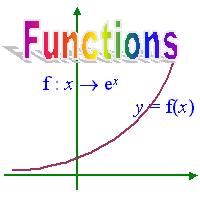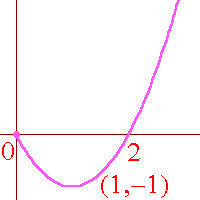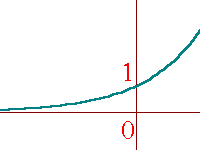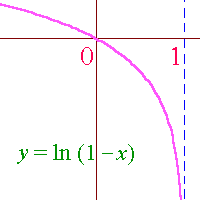 |
 |
 |
 |
 asic Concepts
asic ConceptsA function f : X � Y is a rule which associates each element x � X with a unique element y � Y such that y = f(x).
| Note: |
In defining a function, the rule and domain must be given.�
If the domain is not given, it is taken to be the largest possible domain for which the function is defined.� If the codomain is not specified, it is taken to be the range of the function. |
 njective, Surjective, Bijective
njective, Surjective, Bijective
 nverse Function
nverse FunctionFor every bijective function f : X � Y, there exists an inverse function f-1 : Y � X such that
 omposite Function
omposite FunctionLet f and g be functions.
Then the composite gof,
or simple gf, is defined by
 xamples
xamplesExample 1: Two functions are defined as follows:
| f : x � x2 - 2x, | x � R, x � 0; |
| g : x � e2x, | x � R. |
For each of the functions, state the range and determine
whether or not the function is one-one.
Give, in the same form, the definition of the
functions gof and g-1.
Solution:
 |
Rf = [-1, �).� f(0) = 0 = f(2)� but� 0 �
2.
|
||||||
 |
Rg = R+ = (0, �).�
g is one-one,�
|
| gf(x) | �=� | g(x2 - 2x) | ||||
| � | ||||||
| �=� |
|
| \� gof : x � |
|
, x � R, x � 0. |
|
Let y
|
�=� | e2x |
|
ln y
|
�= | 2x |
|
x
|
�=� | �ln y |
Example 2: The functions f and g are defined by
| f : x � ln x, | �x > 0; |
| g : x � 1 - x, | �x < 1. |
Show that fog is a function.� Define fog and state its range.� Explain why the function gof does not exist.
Solution:
\� fog : x � ln (1 - x), x < 1. Rfog = R.
|
 |
Rf = R, Dg = (-�,
1),
\� Rf �
Dg� �� gof
is not a function.